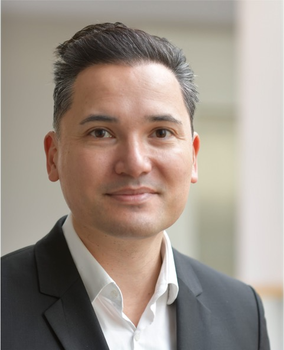Neuromagnetic brain-computer interfaces for restoration of motor function and beyond
Brain-computer interfaces (BCIs) translate electric, magnetic or metabolic brain activity into control signals of external devices, robots or machines. Besides allowing for assistive applications, including communication or restoration of movement in severe paralysis, it was shown that repeated use of BCIs can trigger neurological recovery. Over the last years, BCI-controlled exoskeletons were developed that use electroencephalography (EEG) that are now ready for broad clinical application in neurorehabilitation of stroke and spinal cord injury. However, such EEG-based BCIs have several critical limitations, including low spatial resolution and low signal-to-noise at high frequency bands. In contrast, neuromagnetic BCIs based on magnetoencephalography (MEG) can provide much higher spatial resolution and signal-to-noise. In my talk, I will provide an overview of the current state-of-the-art in neuromagnetic BCIs and explain how magnetometry using novel sensors, such as optically-pumped magnetometers (OPMs) or nitrogen-vacancy (NV) centers in diamond, can advance the field. Special emphasis will be placed on the scientific and clinical perspective to establish bidirectional neuromagnetic BCIs that also integrate magnetic stimulation.
Biography
Surjo R. Soekadar, MD, is Einstein Professor of Clinical Neurotechnology at the Charité - Universitätsmedizin Berlin. From 2009-2011, he was fellow at the Human Cortical Physiology and Stroke Neurorehabilititation Section (HCPS) at the NIH, USA. After his return to Germany, he became head of the Applied Neurotechnology Lab at the University Hospital of Tübingen, where he also served as senior consultant in the Dept. of Psychiatry and Psychotherapy. His research interests include cortical plasticity in the context of brain-computer interface (BCI) applications, non-invasive neuromodulation and neural mechanisms of learning and memory. He and his team demonstrated for the first time that patients with high cervical spinal cord injury and complete finger paralysis can eat and drink independently using a non-invasive brain/neural-controlled hand exoskeleton in an outside restaurant. Dr. Soekadar received various prizes such as the NIH-DFG Research Career Transition Award (2009), the NIH Fellows' Award for Research Excellence (2011), the international BCI Research Award 2012, and the Biomag 2014 and NARSAD 2017 Young Investigator Awards. Besides an ERC Starting Grant to develop the next-generation brain/neural-machine interfaces for restoration of brain functions, he also received an ERC Proof-of-Concept Grant and Consolidator Grant dealing with closed-loop neuromodulation and the development of a bidirectional quantum-BCI.
